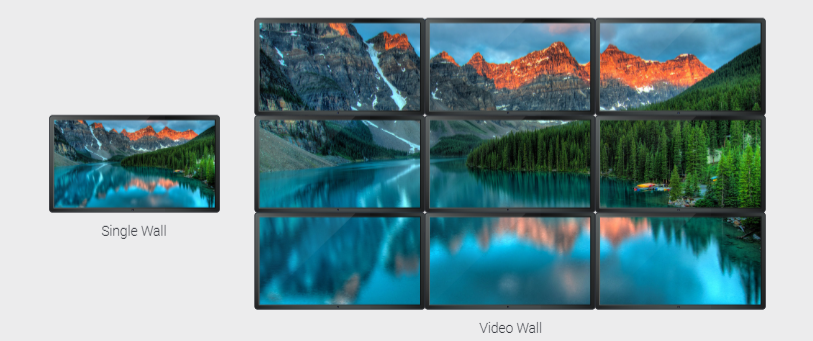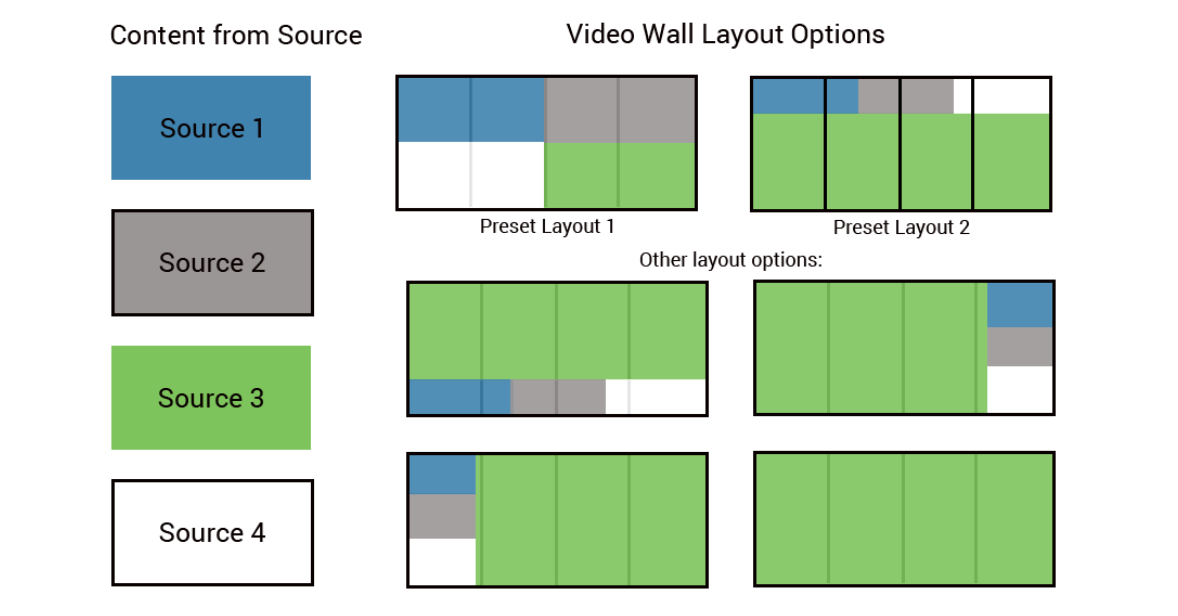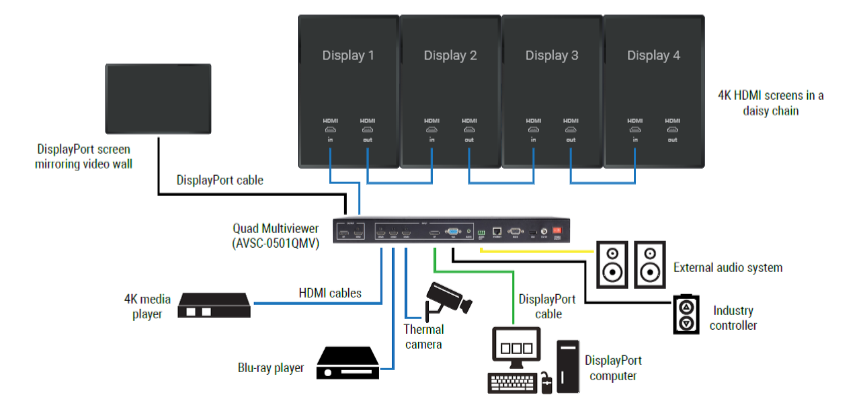Did you know you can connect professional screens together using DisplayPort, HDMI, or DVI cables and display a single video source across them? This process is called daisy chaining. Daisy-chaining displays adds size, visibility, and impact to your content without a video wall processor.
Setting up a display daisy chain varies by manufacturer but usually involves the following steps:
Here is an example of a 9-panel (3 high x 3 wide) video wall made by daisy-chaining next to a single-panel output.
The use of displays that can be daisy chained adds size, visibility and ultimately impact to your content without adding a video wall processor.
For additional impact, consider a multi-viewer. Multi-viewers allow multiple inputs to be individually or simultaneously shown on a single display. Remember that the daisy chain video wall acts as a single display even though it is made up of multiple displays.
Lets take a look at 4 inputs processed through a multi-viewer and displayed on a 4 wide x 1 high daisy chain video wall with preset 1 and 2 mapped to them and the lower right are the remaining preset examples. The multi-viewer allows any of the inputs to be displayed fully across the video wall or multiple in-puts to share the wall based on the preset selected.
The multi-viewer allows any of the inputs to be displayed fully across the video wall or multiple in-puts to share the wall based on the preset selected.
If your application matches the examples shown here, a daisy chain video wall or a daisy chain video wall with a multi-viewer should allow you to increase your impact using built in technology.

 Eric Farkas
Eric FarkasSolutions Architect
Eric Farkas has 25+ years’ experience with signal switching, scaling, extension and conversion technologies. Previous roles in support, engineering, marketing, quality, manufacturing and management contribute to his comprehensive product and system knowledge. As a solutions architect, his primary focus is designing solutions that not only solve business problems but anticipate growth and ever changing technology needs. Eric designs solutions both locally and globally for single site and multi-site deployments.
Download article in PDF format